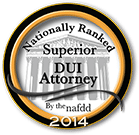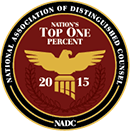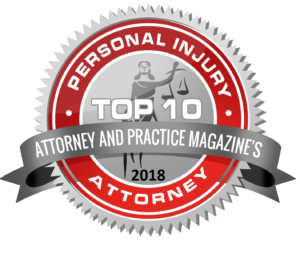Whether it’s in a store, on a sidewalk, or in someone’s home, slip and fall accidents can lead to severe injuries and significant legal ramifications. However, proving negligence in a slip and fall case can be a complex endeavor, requiring careful attention to detail and a thorough understanding of the legal principles at play. In this comprehensive guide, we’ll explore the key elements involved in establishing negligence in a slip and fall case.

Understanding Negligence
Before delving into the specifics of slip and fall cases, it’s essential to grasp the concept of negligence. In legal terms, negligence refers to the failure to exercise reasonable care, resulting in harm to another person. To prove negligence in a slip and fall case, the injured party must demonstrate that the property owner or occupier breached their duty of care, thereby causing the accident and subsequent injuries.
Duty of Care
The first step in proving negligence is establishing the defendant’s duty of care. Property owners and occupiers have a legal obligation to maintain their premises in a reasonably safe condition. This duty encompasses regular inspections, maintenance, and repairs to prevent foreseeable hazards. However, the extent of this duty may vary depending on factors such as the type of property and the relationship between the parties involved.
Identifying Hazards
Once the duty of care is established, the next challenge is identifying the hazards that contributed to the slip and fall accident. Common hazards in these cases include wet floors, uneven surfaces, loose carpets, inadequate lighting, and obstructed walkways. It’s crucial to gather evidence such as photographs, witness statements, and incident reports to document the conditions at the time of the accident.
Proving Causation
In addition to identifying hazards, proving causation is essential in demonstrating negligence. This involves establishing a direct link between the defendant’s breach of duty and the plaintiff’s injuries. For instance, if a store owner fails to clean up a spill promptly, and a customer slips and injures themselves as a result, there is a clear causal connection between the negligence and the harm suffered.
Contributory Negligence
It’s worth noting that in some slip and fall cases, the injured party’s own actions may contribute to the accident. This concept, known as contributory negligence, can affect the outcome of the case. If the plaintiff is found to have been partially responsible for their injuries—for example, by ignoring warning signs or behaving recklessly—their compensation may be reduced accordingly.
Gathering Evidence
Central to proving negligence in a slip and fall case is the collection of compelling evidence. This evidence serves to corroborate the plaintiff’s claims and establish the defendant’s liability. In addition to photographs and witness statements, other forms of evidence may include surveillance footage, maintenance records, and testimony. By meticulously gathering and presenting this evidence, attorneys can strengthen their client’s case and increase the likelihood of a favorable outcome.
Witnesses
In many slip and fall cases, witnesses play a crucial role in establishing liability. These individuals possess knowledge and experience in fields such as premises liability, accident reconstruction, and safety standards. By offering their professional opinions and insights, witnesses can help elucidate complex issues and bolster the plaintiff’s argument. From analyzing the cause of the accident to assessing the property owner’s negligence, their testimony can provide invaluable support in court.
Damages
In addition to proving liability, it’s essential to quantify the damages suffered by the plaintiff as a result of the slip and fall accident. Damages may include medical expenses, lost wages, pain and suffering, and other economic and non-economic losses. Calculating these damages requires a thorough assessment of the plaintiff’s injuries, medical treatment, and long-term prognosis. By accurately quantifying the damages, attorneys can seek fair and just compensation on behalf of their clients.
Statute of Limitations
It’s important to note that slip and fall cases are subject to statutes of limitations, which impose deadlines for filing a lawsuit. These deadlines vary depending on the jurisdiction and the nature of the claim but typically range from one to three years from the date of the accident. Failing to file a lawsuit within the applicable statute of limitations can result in the forfeiture of the plaintiff’s right to seek compensation. Therefore, it’s crucial to consult with an attorney as soon as possible to hit these deadlines.
Settlement Negotiations
In many slip and fall cases, the parties may attempt to reach a settlement out of court through negotiation. Settlement negotiations offer a way to resolve the dispute efficiently and avoid the time and expense of litigation. During these negotiations, attorneys for both sides may exchange settlement offers and counteroffers in an effort to reach a mutually acceptable agreement. While settlements can provide a faster resolution, it’s essential to ensure that any proposed settlement adequately compensates the plaintiff for their injuries and losses.
Litigation Process
If settlement negotiations are unsuccessful, the case may proceed to litigation, where it will be adjudicated in court. The litigation process involves various stages, including pre-trial motions, discovery, and trial. Throughout this process, attorneys present evidence, examine witnesses, and make legal arguments to persuade the judge or jury of their respective positions. While litigation can be time-consuming and costly, it offers a forum for resolving disputes and obtaining a judicial determination of liability and damages.
Jury Trial
In slip and fall cases that proceed to trial, a jury is typically responsible for determining liability and awarding damages. During the trial, the attorneys present their evidence and arguments to the jury, who then deliberates and reaches a verdict. The outcome of the trial hinges on the strength of the evidence presented, the persuasiveness of the attorneys’ arguments, and the credibility of the witnesses. Ultimately, the jury’s decision will dictate the outcome of the case and the amount of compensation awarded to the plaintiff.
Choosing a Personal Injury Attorney Personal Injury Case TimelineRelated Videos
Appeals Process
Following a trial, either party may choose to appeal the verdict if they believe that legal errors occurred during the proceedings or that the outcome was unjust. The appeals process involves submitting written briefs and presenting oral arguments before a higher court, which reviews the lower court’s decision for errors of law or procedure. While appeals can prolong the resolution of the case, they offer an opportunity to seek redress for perceived injustices and obtain a fresh legal interpretation of the issues at hand.
Seeking Justice for Slip and Fall Victims
If you or a loved one has been injured in a slip and fall accident, don’t navigate the legal process alone. Our team at NovaLegalGroup, P.C. is here to help you seek the compensation you deserve. With our extensive experience in personal injury law and our unwavering commitment to client advocacy, we’ll fight tirelessly to hold negligent parties accountable and secure the best possible outcome for your case.
Contact us today to schedule a free consultation with one of our attorneys. Let us handle the legal complexities while you focus on your recovery. Don’t delay — time is of the essence in pursuing your claim. Trust NovaLegalGroup, P.C. to be your dedicated legal ally every step of the way.










